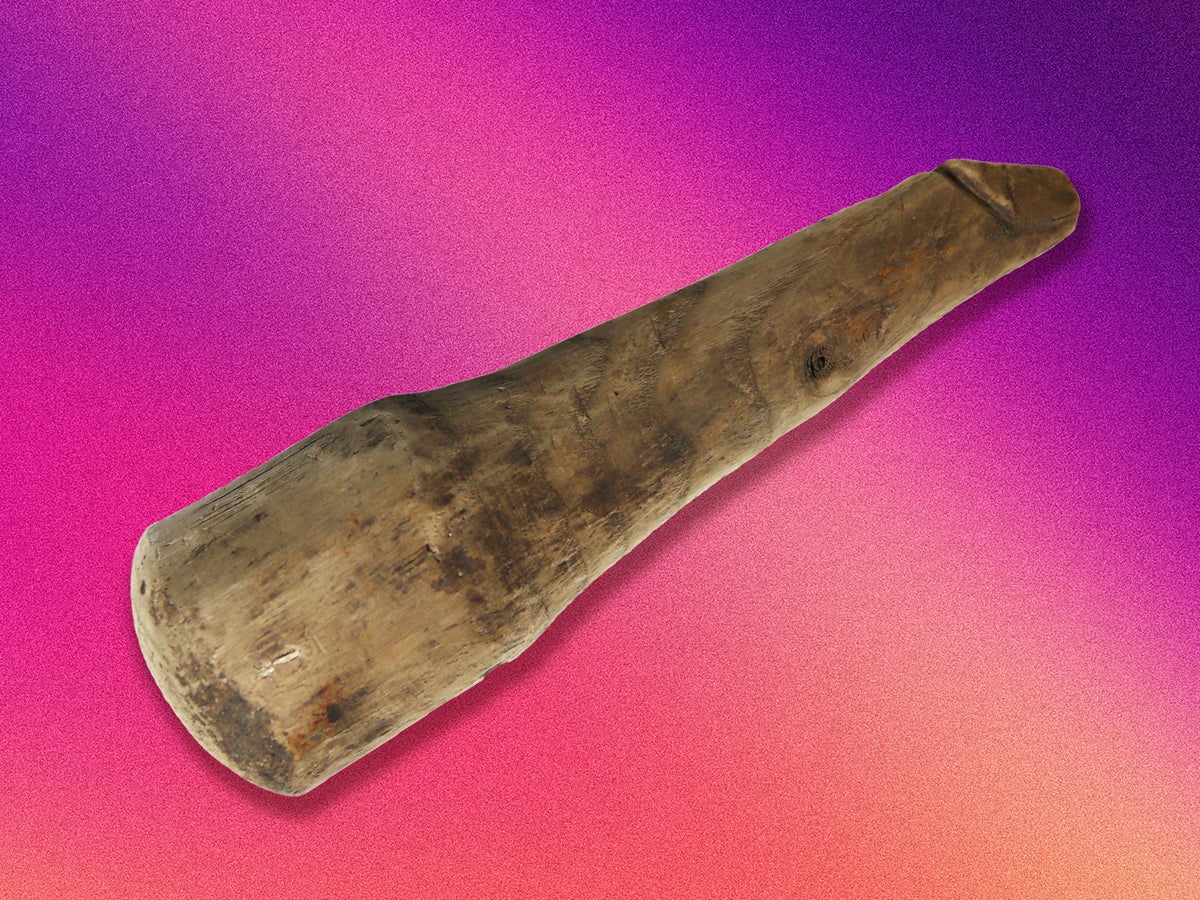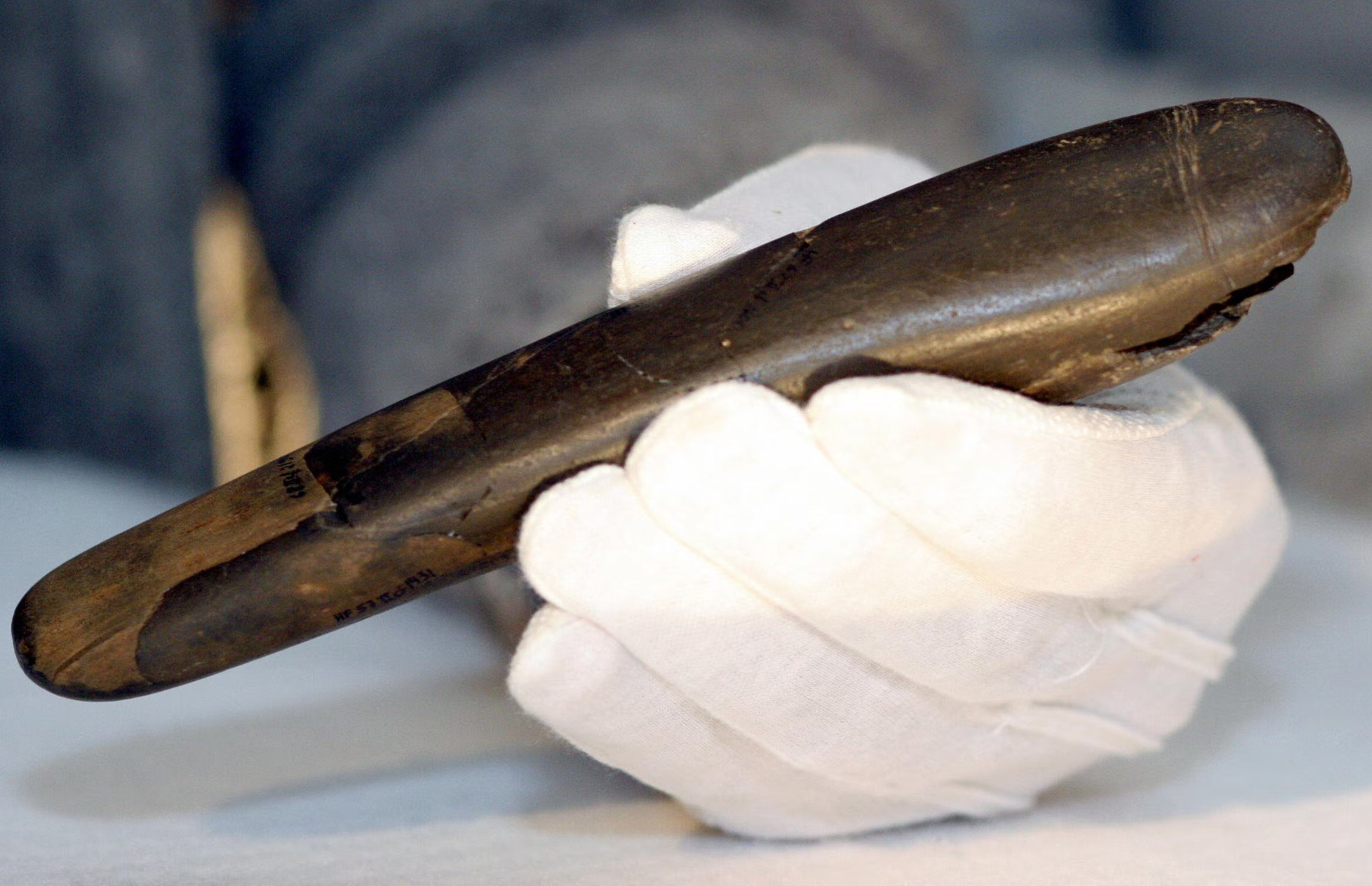
The saying goes that if it looks like a duck and quacks like a duck, it’s probably a duck. But if it looks like an ancient dildo and feels like one, too... it might be a pestle. Or a darning tool. At least according to a mystery person who catalogued the 16cm historical object after it was found at the Roman fort of Vindolanda in Northumberland in 1992. But no. It’s most likely a sex toy of yesteryear.
Reassessed by archaeologists this week, the object is now posited to be the only known life-sized Roman dildo. Six inches in length, it is round and bulbous on one end, while the other end tapers into what looks like, well, the head of a penis. Once you take a closer look at it, there’s no mistaking the tip for anything other than the exposed glans, no foreskin in sight. Even Rob Collins, senior lecturer in archaeology at Newcastle University agrees, telling The Guardian: “I have to confess, part of me thinks it’s kind of self-evident that it is a penis.”
It’s almost as though the person who originally labelled it a darning tool was too embarrassed to suggest anything else. To admit that it might be a rather well-carved wang might have been a bit gauche. According to historians, this is quite likely what happened. Attitudes towards historical sexual objects have only recently started becoming more open and accepting. Before this shift, objects related to genitalia or sexual activity tended to be hidden in the backs of museums – things considered far too offensive to put on display.
Zoe Williams is the development and marketing manager at London’s Vagina Museum, and says such an attitude stemmed from the kind of people acquiring these objects. “The interpretation of these items was done through the eyes of rich, white, Victorian men, who probably had a squeamishness about sex and sexuality and had certain ideas about how things would have been done in the past,” she explains.
The Victorians were famously prudish, upholding a sense of morality that valued thriftiness and sexual repression. But many years before them, while large swathes of Britain were occupied by the Roman empire, the Romans themselves were well-known for placing a huge importance on sex. Although their attitudes were what would be described today as misogynistic – men typically used sex as a way to exercise power, while women were seen as baby-making factories – the Romans were no prudes. And boy, did they love a phallus.
Tiny bronze penises were worn by babies and soldiers as good luck charms and to ward off evil. Phallic symbols are “found on a wide range of Roman objects, from amulets to frescoes to mosaics to lamps”, according to the Met Museum. And much like modern teenagers wielding spray cans, the ancient Romans were even fans of penis-themed graffiti. Much of it continues to grace the walls of abandoned buildings and tunnels today.
Katherine Harvey, a historian specialising in medieval history and the author of The Fires of Lust: Sex in the Middle Ages, says that the male member is a popular motif throughout history. “In [the case] of the Northumberland artefact, the researchers suggest it might be a pestle, which seems plausible to me – there is a long history of sexually explicit imagery on domestic objects, and of the phallus as a lucky symbol,” she says. “So it could be that a phallus-shaped pestle would be seen as a way to ensure that your recipe potion turned out well!”
People in the past were people, just like us— Zoe Wiliams, Vagina Museum
She adds that dildo-style objects have been used for centuries – something we know due to their depictions in ancient art. She points to two examples from medieval times: a woman named Guercia in Bologna, circa 1295, who reportedly showed a “curious male friend” her collection of “various silk instruments, of varying sizes but all equipped with silk testicles, which allowed her to have sex like a man”. Another was Katharina Hetzeldorfer of Speyer, circa 1477, who was executed for having sex with multiple women by using “a fake penis”.
I’d love to shout it from the rooftops that medieval women used strap-ons! But the use of sexual implements goes back even further. In 2005, researchers in a cave in Germany discovered a sculpted, polished phallus measuring 20cm long and 3cm wide. The prehistoric tool was estimated to be about 28,000 years old, with scientists believing it may have been used as a sex aid. However, they acknowledged it was just as likely used to knap, or split, flints.
Williams says that the 2005 identification of the stone as a phallus, as well as the news of the wooden Roman dildo, is a “very positive” indicator of changing attitudes among collectors, historians and museums. “There’s a willingness to explore the possibilities that people in the past had sex lives, and did have sex and masturbate,” she says. “People in the past were people, just like us. So they would’ve had the same sort of needs that we do today.”

Harvey agrees: “It’s only really in the past 20 years or so that the history of sexuality has come to be seen as a valid area of study for historians and something that museums are not embarrassed to talk about.” She says that The Wellcome Collection’s 2014 exhibit on historic erotica was also groundbreaking, adding: “[It’s] something that would have been hard to imagine them doing 20 or 30 years ago.”
“I’ve done a lot of work with medieval bishops’ registers and, if you use the Victorian editions, they often simply leave out anything to do with sex, [and] particularly homosexuality,” she continues. “Obviously that’s an extreme example, and an old one, but I think it reflects an attitude that persisted for a long time – that this wasn’t really a suitable subject for conversation, never mind serious study.”
So what can a Roman dildo teach us? As it turns out, quite a lot. With society becoming more curious about the sex lives of the humans who came before us, it seems inevitable that someday we’ll see all the hidden objects currently sitting in boxes at the back of museums come to light. And next time you see a graffitied penis on the wall in all its spouting glory, think of the Romans. I know I’ll be.







